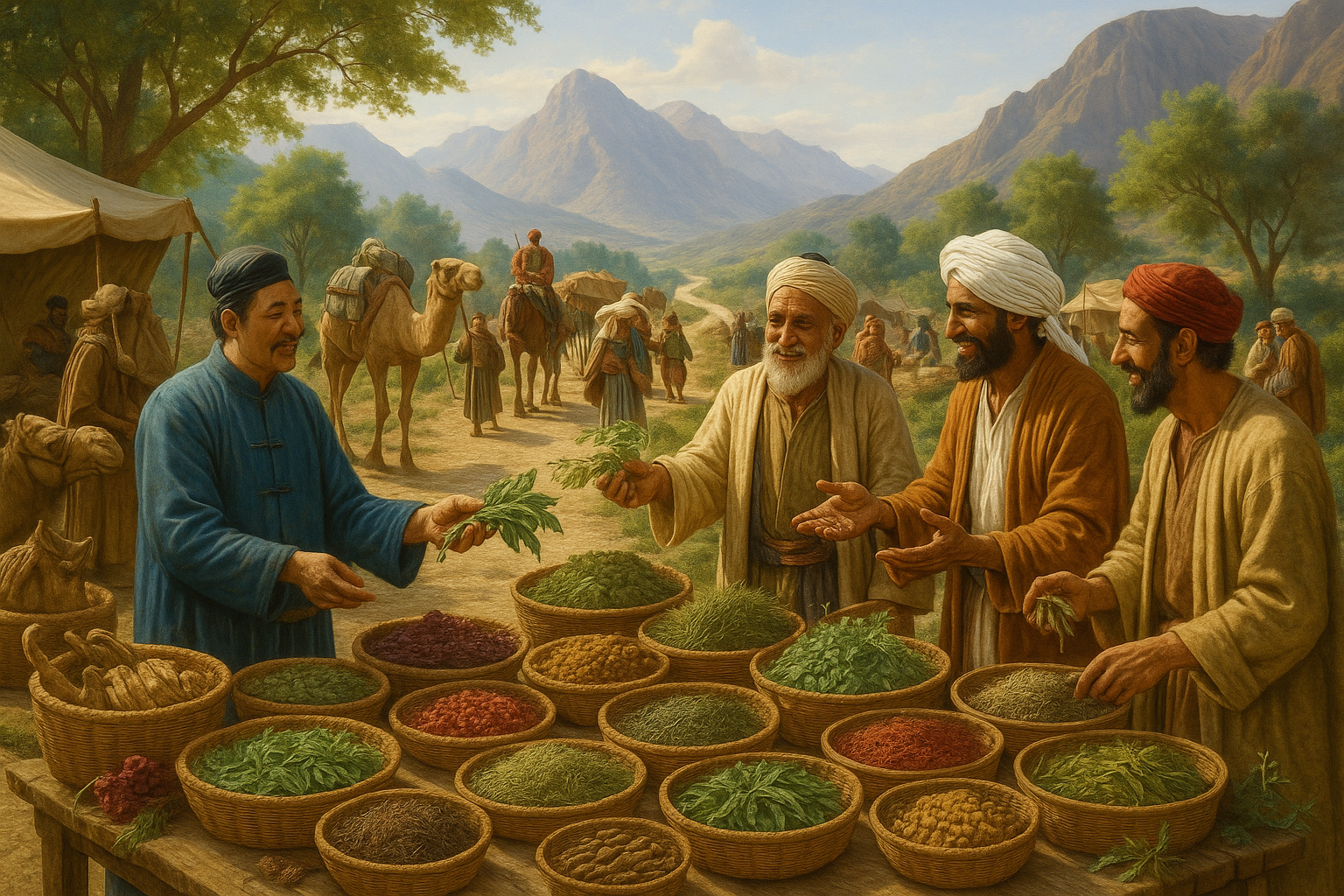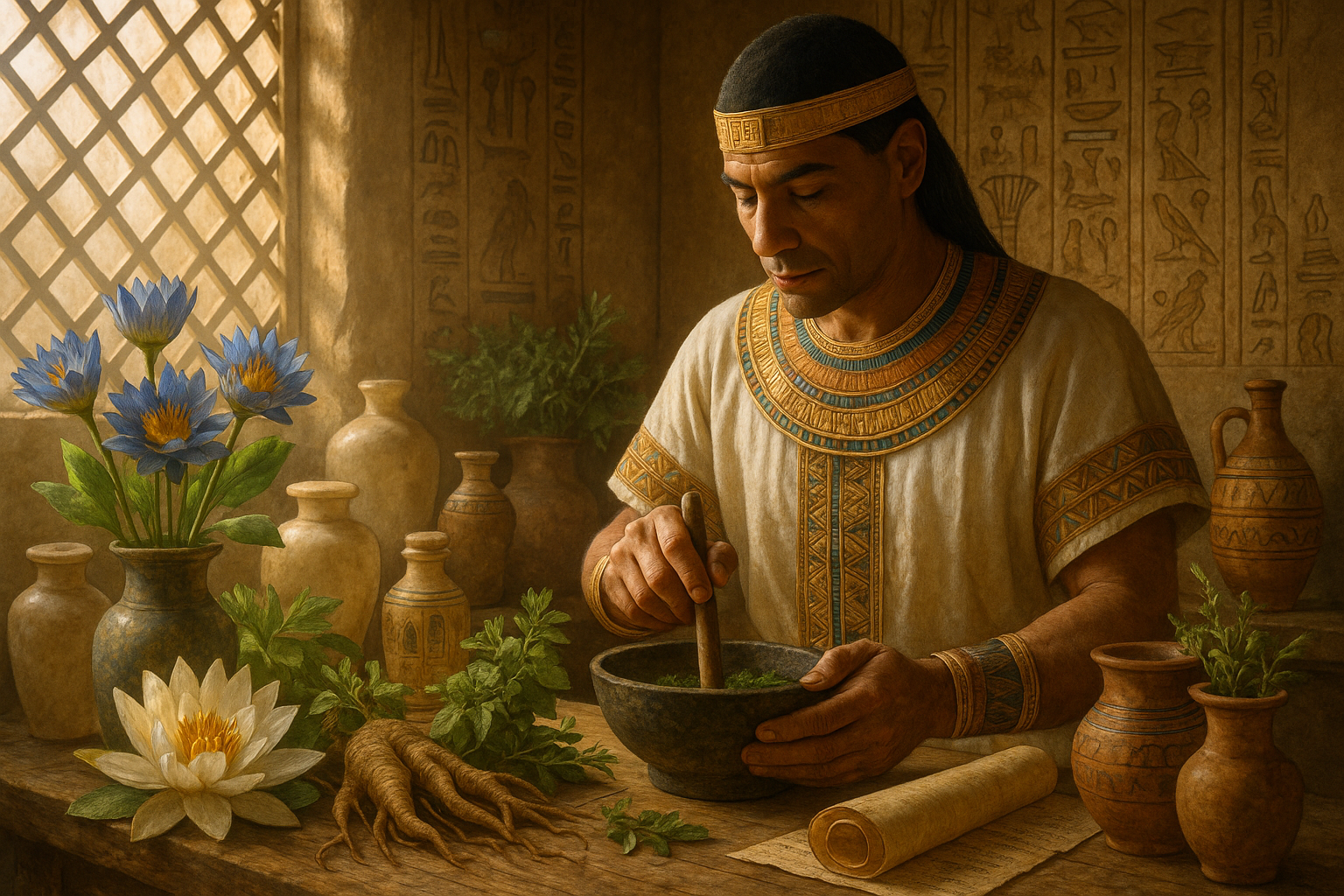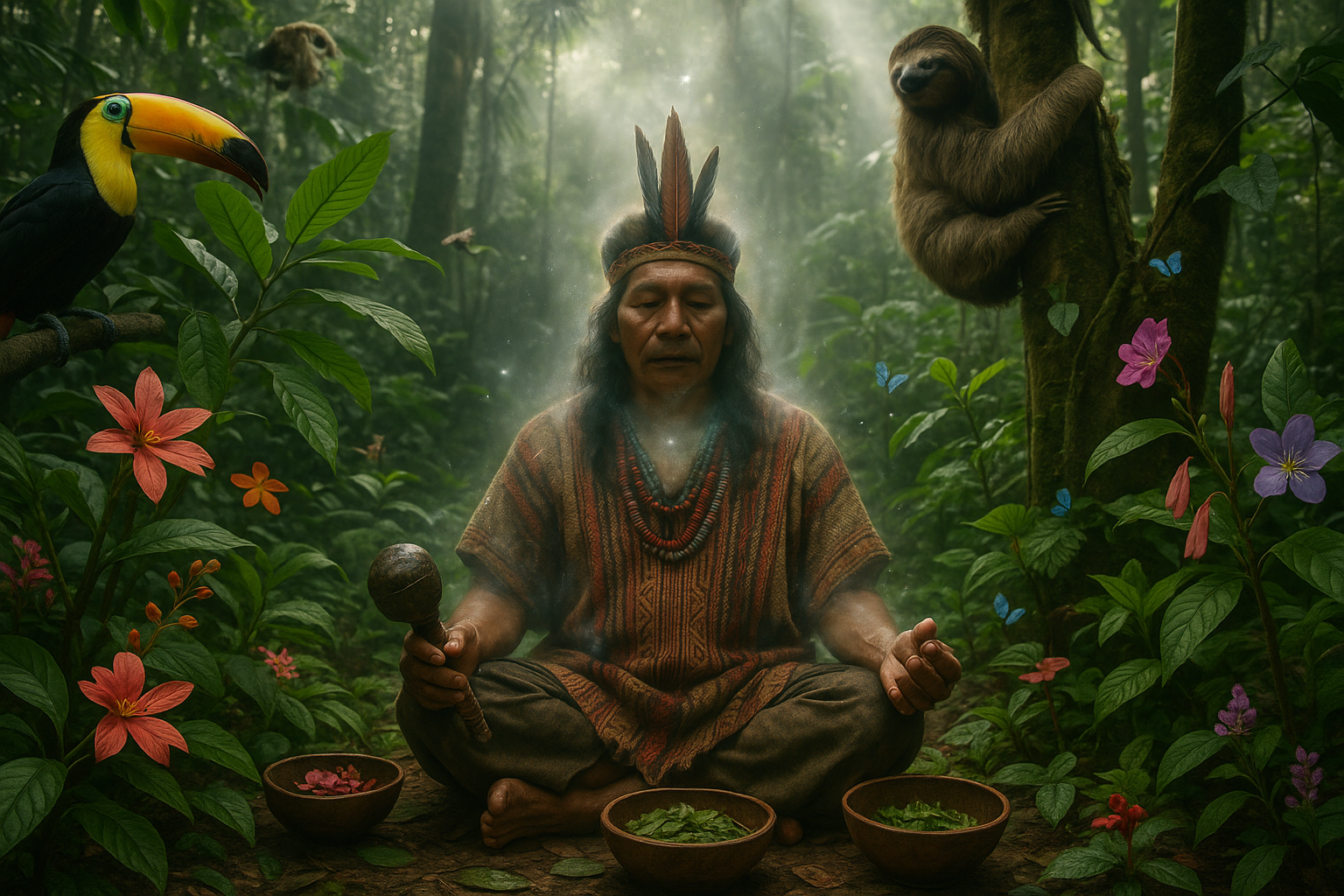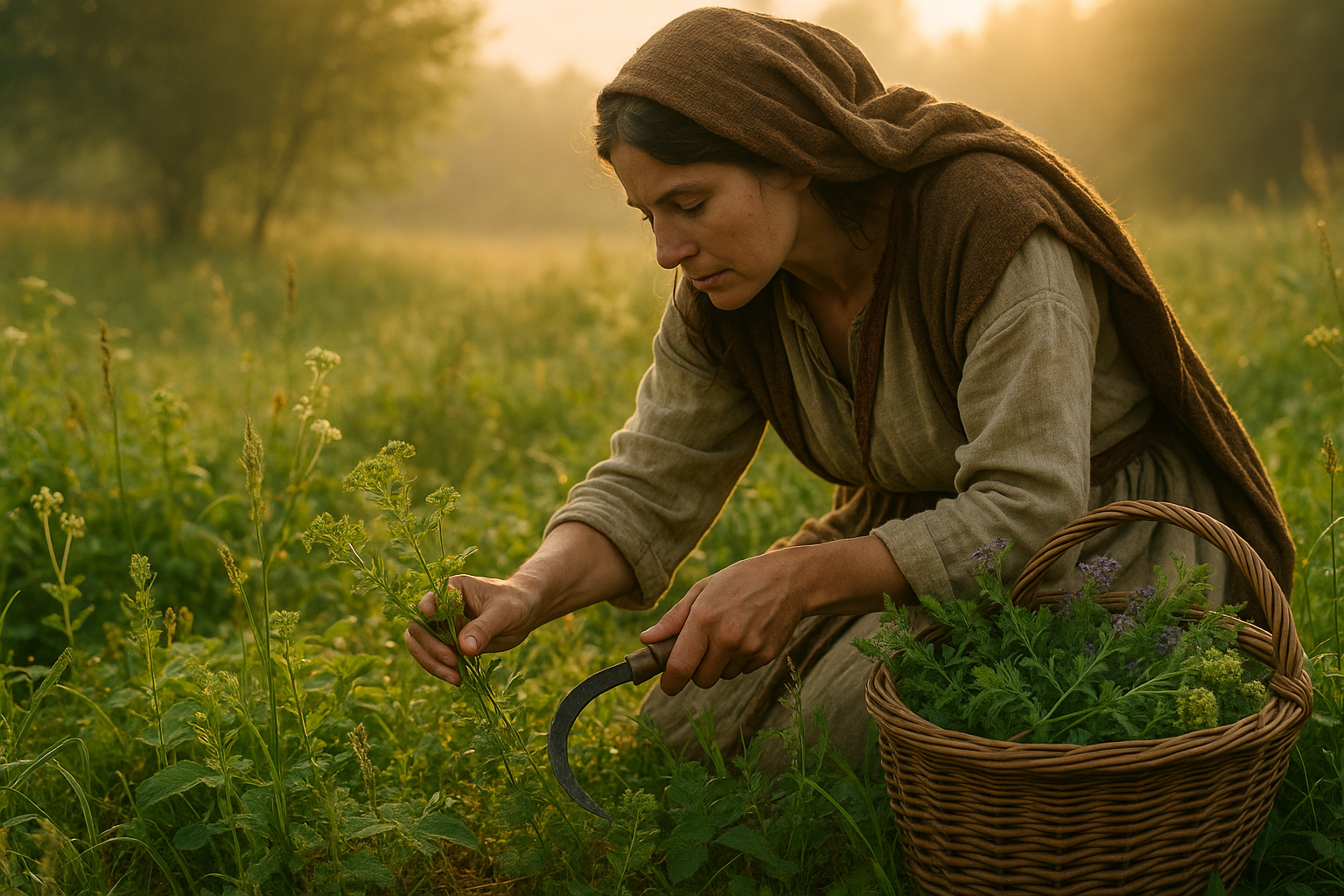In a world where information travels at the speed of light, it’s hard to imagine a time when knowledge was exchanged through dusty roads, bustling markets, and the whispers of travelers. Yet, centuries ago, the ancient trade routes served as the lifeblood of civilizations, weaving a tapestry of cultures and ideas across continents. Among the treasures traded—silk, spices, gold—herbal knowledge stood as one of the most significant, albeit subtle, currencies of exchange. 🌿
As merchants and explorers traversed these routes, they carried with them not just goods but also stories, traditions, and, crucially, botanical wisdom. This flow of herbal knowledge transformed societies, influencing medicinal practices and daily life across vast regions. In this article, we delve into the fascinating world of ancient trade routes and uncover how they played a pivotal role in expanding the understanding of herbs across diverse cultures.
The Silk Road, perhaps the most iconic of these routes, was not just a single road but a vast network of interconnected pathways stretching from China to the Mediterranean. Along these routes, caravans laden with exotic goods also transported valuable information about plants and their uses. Chinese herbalists, for instance, shared their deep understanding of ginseng and rhubarb, while Indian traders introduced the wonders of turmeric and cardamom. These interactions enriched the herbal pharmacopeias of many civilizations, leading to the development of new remedies and culinary traditions.
But the Silk Road was just one of many such networks. The Incense Route, spanning the Arabian Peninsula, facilitated the exchange of aromatic resins like frankincense and myrrh, which held religious and medicinal significance in multiple cultures. Meanwhile, the Maritime Spice Route connected the lush spice islands of Southeast Asia with markets as far as Europe, introducing an array of flavors and healing spices that would revolutionize cooking and health practices worldwide.
In this exploration, we will journey through these historic pathways, uncovering stories of intrepid traders, ingenious healers, and the plants that bridged continents. We’ll examine how the cross-cultural exchange of herbal knowledge influenced traditional medicine systems such as Ayurveda, Traditional Chinese Medicine, and the Greco-Arabic Unani system. These ancient practices, rooted in the shared wisdom of diverse cultures, continue to impact modern holistic healing approaches today.
Furthermore, we’ll delve into the role of specific plants that became global phenomena thanks to these trade routes. Take ginger, for example—a root that found its way from Southeast Asia to the kitchens and apothecaries of the world. Or cinnamon, once more precious than gold, which spiced up not only food but also economies and exploration endeavors. 🌏
We’ll also consider the socio-economic impacts of this herbal exchange. As demand for certain plants grew, entire economies shifted, and landscapes transformed to accommodate the cultivation and trade of these valuable resources. This, in turn, influenced cultural practices, diets, and even political landscapes, demonstrating the profound impact of herbal knowledge beyond mere health benefits.
Finally, we will reflect on the enduring legacy of these ancient trade routes in today’s world. In an era increasingly interested in sustainable and holistic living, the wisdom carried by these age-old pathways offers valuable insights. As modern society looks back to traditional herbal practices for health and wellness solutions, the stories of ancient trade routes remind us of the rich tapestry of shared human experience and the interconnectedness of our global heritage.
Join us as we unlock the secrets of ancient wisdom, tracing the journey of herbal knowledge across continents and centuries. This exploration not only sheds light on the past but also illuminates pathways to a more interconnected and informed future, where the lessons of history guide us toward a more holistic understanding of health and well-being. 🌿

Conclusion: Bridging Cultures Through Ancient Herbal Wisdom 🌿
In our exploration of how trade routes served as conduits for herbal knowledge across ancient civilizations, we’ve uncovered a rich tapestry of cultural exchange that transcended mere commerce. These trade routes, from the Silk Road to the Maritime Spice Routes, were instrumental in fostering a global dialogue that enriched medicinal practices worldwide.
1. Cultural Exchange: We delved into the mutual influence of diverse cultures, where the exchange of herbal knowledge went hand-in-hand with the sharing of philosophies, religious beliefs, and scientific understanding. This cultural synergy not only broadened medicinal practices but also promoted a deeper understanding and respect among civilizations.
2. Herbal Medicine Development: The dissemination of plants like ginger from Southeast Asia, turmeric from India, and chamomile from Europe illustrated how trade routes expanded the pharmacopoeia of many cultures, offering solutions to common ailments and improving health outcomes.
3. Preservation of Knowledge: The role of ancient texts and manuscripts, often safeguarded and translated by scholars, was crucial in preserving herbal knowledge. These documents acted as repositories that ensured the survival of valuable medicinal wisdom through the ages.
4. Modern Implications: Today, the principles established through these ancient exchanges continue to inform contemporary herbal medicine and holistic health practices. The globalized world has seen a resurgence of interest in natural remedies, with ancient knowledge providing a foundation for modern scientific exploration.
The Importance of Continued Exploration
Understanding the historical interconnections that shaped herbal medicine underscores the importance of preserving and respecting traditional knowledge systems. As we face contemporary health challenges, tapping into this ancient wisdom can offer innovative solutions and alternative approaches to wellness.
We encourage you to reflect on the ways in which these historical insights can be applied in today’s context, both personally and within broader health practices. Engaging with this rich heritage can inspire a renewed appreciation for the natural world and its profound impact on human health.
🔗 For those interested in further exploration, we recommend checking out resources such as [The Silk Road Project](https://www.silkroadproject.org) and [World Health Organization’s Traditional Medicine Strategy](https://www.who.int/health-topics/traditional-complementary-and-integrative-medicine).
We invite you to share your thoughts and insights in the comments below. How might you incorporate ancient herbal practices into your life? Feel free to share this article with friends or colleagues who might find value in these historical perspectives. Together, let’s continue to unlock the wisdom of the past for a healthier future. 🌍
Toni Santos is a researcher and practitioner specializing in the study of ancestral healing systems, energetic frameworks of the body, ancient herbal traditions, and sacred operative procedures. Through an interdisciplinary and historically-rooted lens, Toni investigates how humanity has preserved and transmitted knowledge of preventive health, subtle anatomy, plant medicine, and ritual intervention — across cultures, lineages, and sacred traditions. His work is grounded in a fascination with healing not only as physical remedy, but as carriers of hidden wisdom. From ancestral preventive health practices to energetic healing maps and ritual operative techniques, Toni uncovers the visual and symbolic tools through which cultures preserved their relationship with the body, spirit, and plant world. With a background in ethnomedical history and comparative anatomy systems, Toni blends archival research with practical study to reveal how ancient societies used plants, energy, and ceremony to shape health, transmit wisdom, and encode sacred knowledge. As the creative mind behind jirenx.com, Toni curates illustrated frameworks, historical case studies, and symbolic interpretations that revive the deep cultural ties between ancestral medicine, energetic healing, and sacred procedure. His work is a tribute to: The lost healing wisdom of Ancestral Preventive Health Practices The guarded rituals of Energetic Anatomy and Healing Maps The ancient knowledge of Herbal Pharmacology of Antiquity The layered sacred practice of Ritual Surgery and Sacred Operations Whether you're a traditional medicine scholar, energetic healer, or curious seeker of ancestral health wisdom, Toni invites you to explore the hidden roots of sacred medicine — one practice, one map, one ritual at a time.



